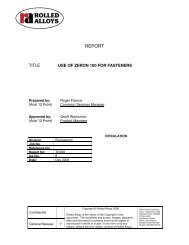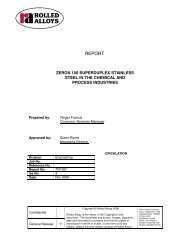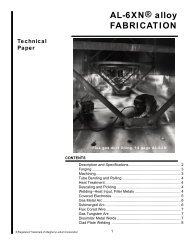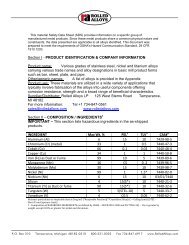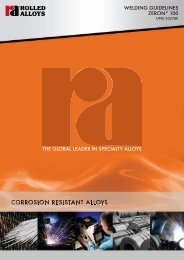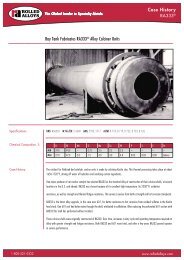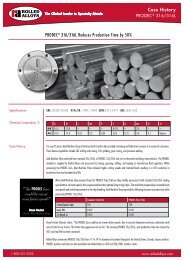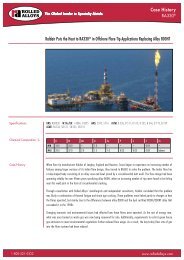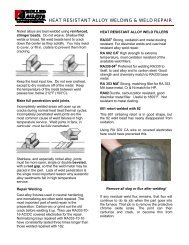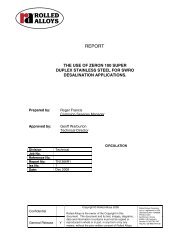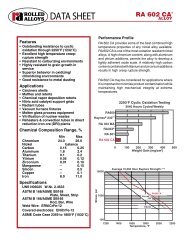RA330®a - Rolled Alloys
RA330®a - Rolled Alloys
RA330®a - Rolled Alloys
Create successful ePaper yourself
Turn your PDF publications into a flip-book with our unique Google optimized e-Paper software.
13. REPAIR WELDING<br />
Heat resistant alloy equipment is often repair welded to extend its useful service life.<br />
Success or failure of the repair procedure depends on how badly the alloy has been<br />
embrittled by service conditions, on how experienced the shop is in repair welding and,<br />
frankly, on a certain degree of luck.<br />
A pocket magnet is a useful first guide to the possibility of repair welding a particular area.<br />
Wrought austenitic heat resisting alloys are non-magnetic as supplied. Strong magnetism<br />
usually means the alloy is heavily carburized on the surface. The alloy can also<br />
become magnetic from severe intergranular oxidation such as may occur in salt pots or in<br />
the skirts of sand sealed retorts. In either case, it is difficult to repair weld highly magnetic<br />
areas.<br />
Remove all scale in the area to be welded and grind highly magnetic surfaces down to<br />
sound metal. Cracks should be ground out, although with highly carburized material<br />
grinding itself may cause cracking.<br />
Use small diameter covered electrodes with DCRP at as low a current as will maintain a<br />
stable arc. Some shops feel that peening each pass reduces weld shrinkage stress,<br />
hence reduces chances of base metal cracking next to the weld.<br />
Choice of electrodes depends on what will best stick to the individual job in question.<br />
This may sound crude, but because of sub-surface oxidation the weld metal will not always<br />
wet or tie-in to the old base metal For this reason, coated electrodes are preferred<br />
for repairing used heat resistant alloy equipment. The coating helps flux away internal<br />
oxides and scale that might have been missed during joint preparation.<br />
Various nickel alloys such as RA333-70-16, RA330-04-15 and ENiCrFe-3 are used successfully<br />
for weld repair. AWS E312, and the “magic” trade named varieties of 312,<br />
should be avoided. These 29Cr-9Ni welds soon break in high temperature service.<br />
Many shops have found RA333-70-16 electrodes exceptionally useful for repairing components<br />
which have been carburized. RA333 electrodes develop a very fluid weld puddle<br />
at relatively low current. Lower heat in turn avoids cracking of alloy parts embrittled from<br />
service. In use, the RA333 weld may outlast the original part.<br />
9




